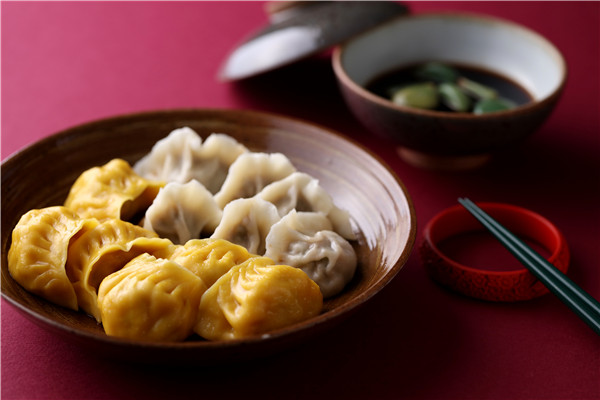Eat for luck
 |
|
Dumplings in silver and golden colors in Rosewood Beijing's Country Kitchen. [Photo provided to China Daily] |
"I wanted to create a health-conscious Chinese New Year menu using seasonal Chinese ingredients," the chef says. "Considering that the wolf-berry fruit is a super-food, which has been used in traditional Chinese medicine for many years, I decided to use it as the theme of the menu."
Ritual is important: The head should be placed toward distinguished guests or elders, representing respect. Other guests can enjoy the fish only after the one who faces the fish head eats first. Finally, the fish shouldn't be moved. The two people who face the head and tail of fish should drink together for luck.
Chinese dumplings (jiaozi) are another important holiday dish, a tradition to eat on Chinese New Year's Eve, especially in North China. With a history dating back more than 1,800 years, dumplings can be made to look like boat-shaped Chinese silver ingots. If you are a newcomer to China, don't be surprised if folks seem gluttonous as they eat them. The more dumplings you eat during Spring Festival celebrations, according to legend, the more money you can make in the New Year.
Minced meat and finely chopped vegetables, unsurprisingly, are popular fillings. Cabbage and radish fillings are favorites for New Year's Eve, so that one's skin will become fair and one's mood will become gentle. But Chinese sauerkraut filling is avoided at this time; it suggests a poor or difficult future.
The idea of wealth is behind many dumpling traditions. Whether you boil, steam, fry or bake them, there must be a good number of pleats: A junction that is too flat portends poverty. Also, dumplings should be arranged in lines, not circles, or your life will go round and round, never going anywhere.
















